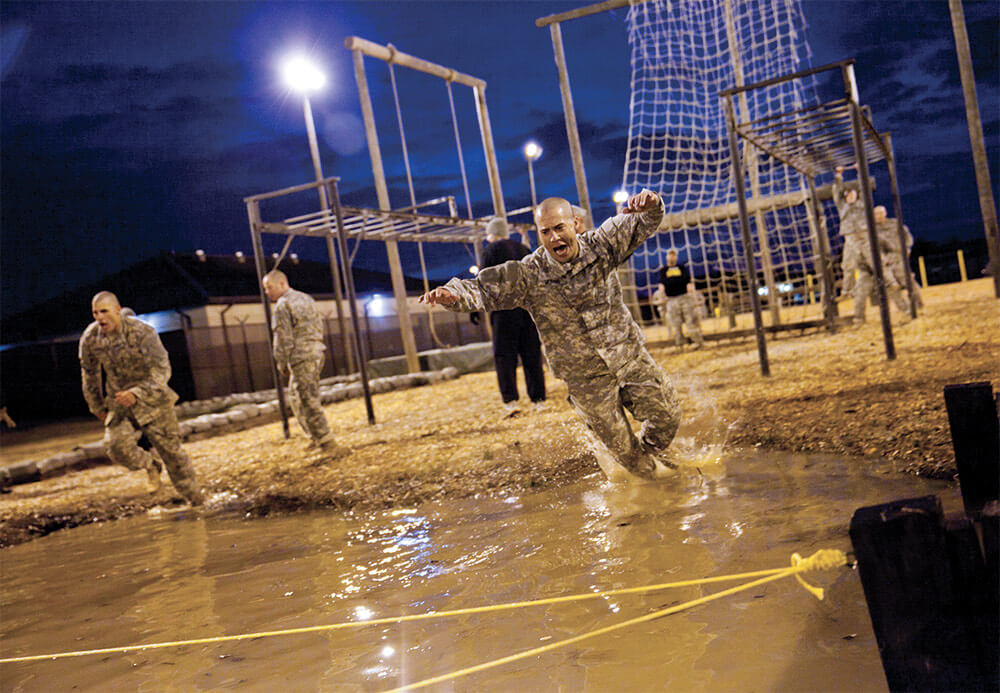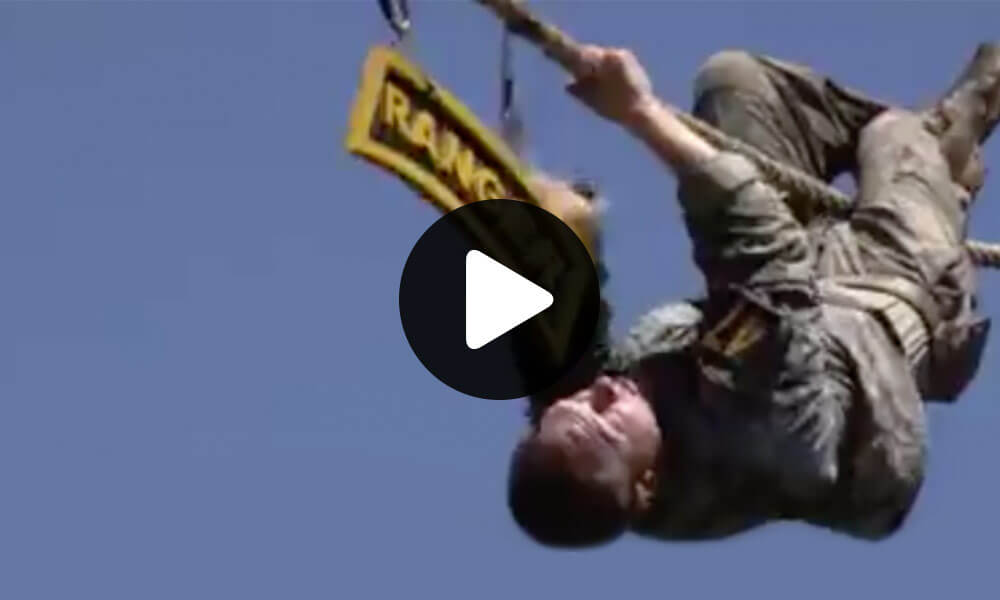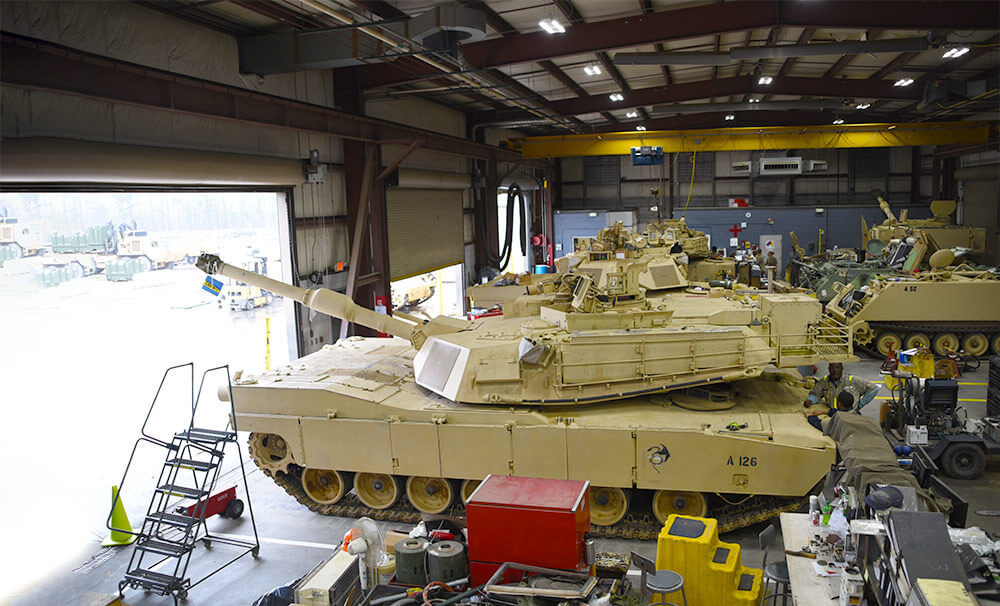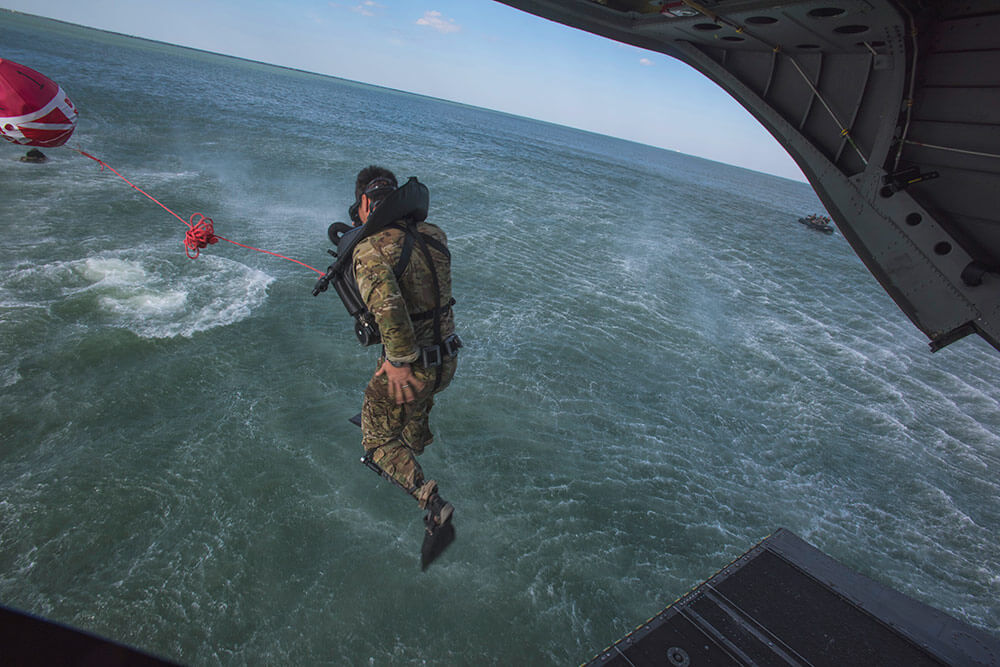Warrior Training Center Turns Guard Soldiers into High-Performance Ranger Candidates
Rangers have a long history of being among the best of the best warriors in the Army. Ranger School accepts only the most highly disciplined Soldiers, both mentally and physically. On average, only 50 percent of Ranger School students graduate and become Ranger-certified.
With these statistics in mind, if you want to become Ranger-certified, you might want an opportunity for some advanced training to increase your odds of successfully completing the course. Where do you go? One place in particular is renowned for its record of improving a Soldier’s odds of earning the coveted Ranger tab. For nearly two decades, the Warrior Training Center (WTC) has been prepping Guard Soldiers for success at Ranger School.
According to National Guard Bureau data, during the mid-1990s, only one in 10 Guard Soldiers who entered Ranger School graduated. To remedy these low numbers, and to boost Guard participation in Ranger School, the Army National Guard began developing an informal course designed to prepare Guard Soldiers for what to expect at Ranger School, potentially increasing their odds of graduating to become Rangers.
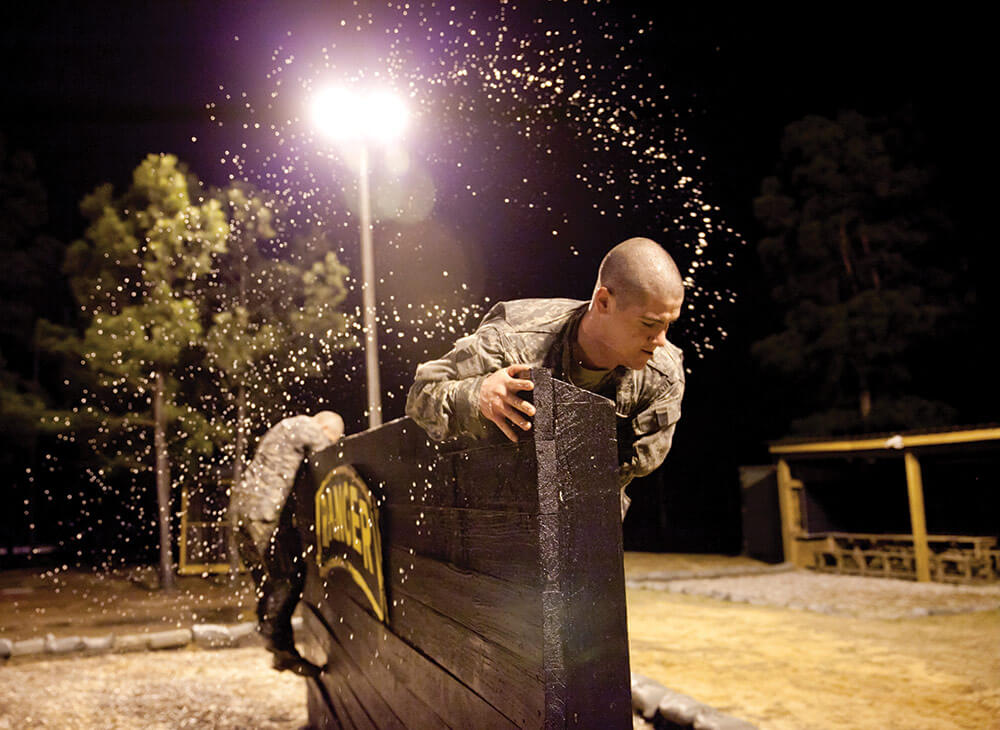
This course gave Guard Soldiers two weeks of full-time training to perfect their skills before entering Ranger School. With 1LT Jamison Kirby and SFC Thomas Siter leading the way at the then-new prep course, Guard pass rates at Ranger School quickly improved.
To properly design the prep course, 1LT Kirby and SFC Siter kept in close contact with the active duty personnel at Ranger School to learn about the events and tasks required to graduate. They needed to know how to best prepare their candidates. 1LT Kirby and SFC Siter also stayed in contact with Guard Soldiers who were in the final stages of Ranger School. They would sometimes give rides to Soldiers out on leave and use the time in the car to get feedback and delve into any insight the Soldiers might share on how the prep course could be improved to more accurately represent Ranger School.
No written records of those early days exist, as the course was still informal and considered unofficial. But the value in the effort became readily apparent to those higher up the chain of command. The course turned out successful candidates for years and gained a reputation for success. The tide had been turned.
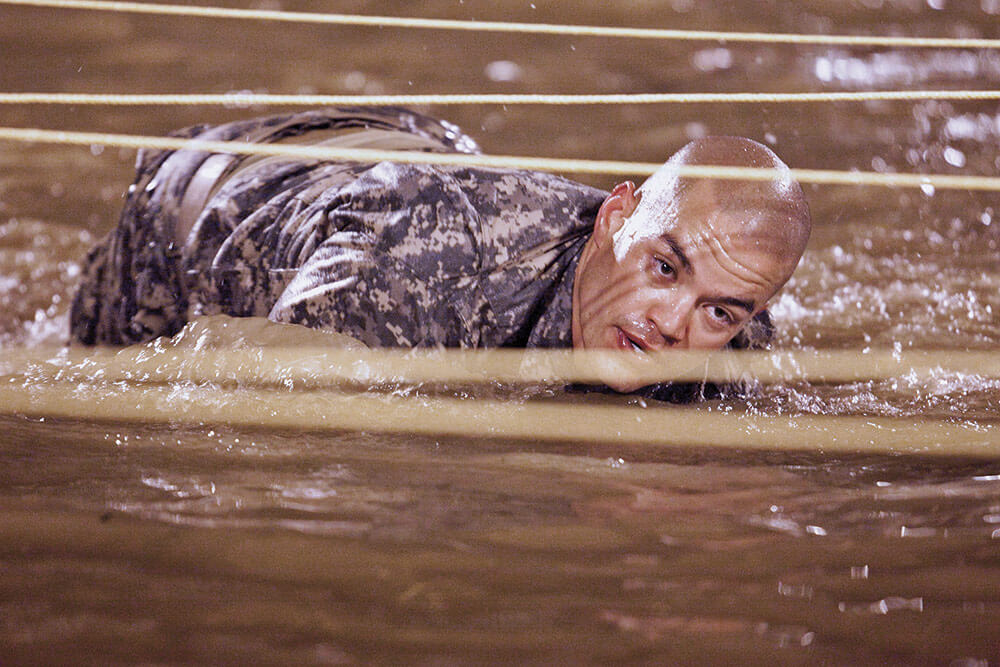
In 2004, the program found an official home at Camp Butler in Fort Benning, Ga. 1LT Kirby was promoted to captain and became the officer-in-charge of the unit. Soon after, SFC Siter was named commandant of the facility; and in 2006, when MAJ Carlton B. Paris took command of the program, the National Guard Bureau designated the unit the Warrior Training Center.
Today at the WTC, what has become known as the Ranger Training Assessment Course (RTAC) offers both Guard and active duty Soldiers the opportunity for one-on-one instruction from certified Ranger Instructors. Over the course of the two-week training, the instructors take pains to coach each Soldier on what it takes to prepare for the rigors of Ranger School.
“If you show up straight from your unit and go to Ranger School, you have about a 35 percent chance of graduating,” said CPT Tyler Bell, current Alpha Company Commander of the WTC. “If you come here and go through RTAC first, graduate the course, and then go [to Ranger School], you have about a 50 percent chance of graduating.”
Still key to the success of the RTAC is ensuring the preparatory training remains in line with current requirements at Ranger School. Every instructor at RTAC is Ranger Instructor Training Education Program (RITEP)-certified, and they have a continuing relationship with the instructors at Ranger School. In fact, up until December of 2016, CPT Bell was assigned to the 6th Ranger Training Battalion.

“We’re putting out the right information. We have such a close relationship with [the instructors at Ranger School] that we know exactly what to do,” noted CPT Bell. “Airborne and Ranger Training Brigade Headquarters is only about a mile down the road from us. Proximity-wise they’re close, but we’re close in relationships too. We’re pretty well integrated with the course in general and are mutually supportive.”
RTAC includes full days of both physical and classroom training. It’s an education Guard Soldiers would be hard pressed to find elsewhere.
“We help get Soldiers ready who might not have had the opportunity or the time available at their Guard unit to do things like land navigation, troop leading procedures or putting radios into operation,” said CPT Bell. “There are Soldiers who show up who haven’t touched a 240 Bravo in a year, or they may never have touched a radio.”
CPT Bell went on to say that, “A lot of it is about repetition and time spent training. It’s tough to get in-depth, immersive training at your unit down to the man. We give personal counseling and personal feedback from a certified Ranger Instructor who knows exactly how to be successful at the school.”
Though RTAC is an assessment and not actual Ranger School, it mimics in many ways the same events Soldiers will need to master to become Rangers. For instance, land navigation is emphasized heavily at Ranger School so ample training time is allocated to it during RTAC.
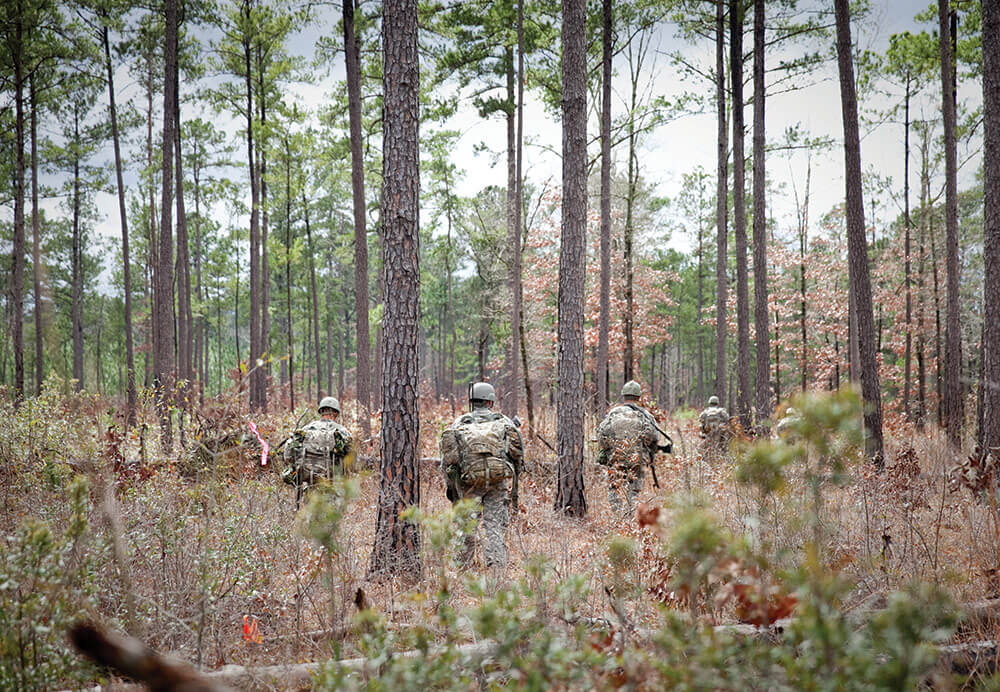
“They’re up significantly early so that we can get out through land-nav sites with half the time during darkness, half of the time during light – hours of limited visibility and hours of good visibility,” CPT Bell said.
Two land navigation test days are designated where Soldiers are required to find four points in one day. Failure to locate all four points could result in being dropped from the course.
Soldiers must also tackle the Ranger Physical Assessment, formerly called the Ranger Physical Fitness Test, during the RTAC. They must complete 49 sit-ups and 59 pushups in two minutes, then complete a five-mile run in 40 minutes or less. Failure to pass the Ranger physical fitness assessment could also result in being dropped from the course.
“We also have what’s called a combat water swim assessment,” CPT Bell went on to explain. “It’s meant to closely simulate the combat water swim assessment they do at Ranger School, which is to stress you out in the water.”
When prepping to become a Ranger, there truly is no rest for the weary. The very next morning after the swim assessment, Soldiers face a nine-mile foot march. They must maintain a 15-minute per mile pace for nine miles.
It’s likely that if a Soldier excels at the events in the RTAC, they will do well in Ranger School.
“These are the things we work on so that when Soldiers get to Ranger School they are that much more prepared,” noted CPT Bell.
The bar on the prerequisite road to becoming a Ranger is set high, and while it is known that not everyone will pass, it is nevertheless the goal of the leaders and instructors in Alpha Company to push every student to graduate the RTAC.
“We [don’t] focus on weeding out,” CPT Bell said. “We focus on training, not attrition. Attrition will happen naturally with people that miss standards and people that miss dates.”
Prior to the WTC, Guard Soldiers struggled through Ranger School with no formal preparation, and little chance of actually becoming Rangers. The Army National Guard recognized this problem and took action. With direction from motivated and creative leadership, the WTC grew in size and reputation, and today includes students from active duty, sister service branches and even some international students.
“Two courses ago, we had two Marines and before that we had four Air Force combat controllers,” CPT Bell recalled.
Though the RTAC’s primary focus has remained helping Guard Soldiers achieve a higher success rate at Ranger School, as the RTAC grew so did demand for preparatory courses for more of the Army’s advanced schools. In response, the WTC began to offer a host of courses including the Master Fitness Training Course where a Soldier can earn a master fitness training certification, an Air Assault course as well as Rappel Master and Pathfinder courses.
Charlie Company at the WTC offers heavy weapons training for the M1 Abrams Main Battle Tank and the Bradley Fighting Vehicle.
The WTC also offers preparation for military skills competitions, like the Gainey Cup’s Best Scout and even the Best Ranger competition. The horizon for the WTC seems to be ever-expanding.
As for the RTAC, CPT Bell said he is always on the lookout not only for new students, but for qualified Soldiers who might be interested in an MOS at the WTC.
“We’re always looking for Ranger-qualified National Guard Soldiers to come here and be part of the team,” he said. “We’re always on the lookout for good Soldiers from all places.”
by Staff Writer Matthew Liptak
VIDEO
